Provided by NATAP
Summary from AASLD 2013 for Hepatitis C Washington 1-5 November 2013
Jurgen K. Rockstroh M.D., Professor of Medicine
University of Bonn, Germany
Correspondence:
Prof. Dr. J.K. Rockstroh
Department of Medicine I
University of Bonn
Sigmund-Freud-Str. 25
53105 Bonn
Germany
Tel.: +49-228-287 16558
FAX: +49-228-287 15034
e-mail: juergen.rockstroh@ukb.uni-bonn.de
Introduction
\Although the introduction of the first DAA based triple therapy (telaprevir or boceprevir in combination with IFN/RBV) has already considerably improved outcome of HCV therapy and changed HCV treatment paradigms for HCV therapy, it became rapidly clear that patient populations exist which will remain difficult to treat including previous non-responders, particularly with concomitant cirrhosis, as well as patients pre and post liver transplantation with HCV recurrence. Also genotype 3 patients have emerged as a new difficult to treat patient group with IFN-free HCV regimens, again particularly in patients with cirrhosis. Moreover, with sofosbuvir achieving positive FDA panel approval and simeprevir just being approved in the USA and Canada at the end of November, the question remains how these drugs will be best used in the future after final approval in the next months. Will combinations of DAA from different companies on the basis of promising results from early pilot trials be sufficient to warrant their use outside of clinical trials? Will the various DAA combinations from a number of different companies be able to offer interferon-free HCV treatment regimens for all even for cirrhotic genotype 3 patients? This AASLD was able to create a great buzz around the fast moving and exciting HCV treatment story, which attracted over 10.000 delegates to attend AASLD in Washington and to experience these new advances in an unparalleled medicine success story. With a constantly increasing number of DAAs in development from conference to conference it becomes increasingly difficult to foresee where and in whom the individual drugs will be used eventually. Clearly pricing of the new drugs will also impact the use of the respective drug accordingly. The conference closed with a hepatitis C debrief by Mark Sulkowski which was simply excellent and everyone interested in HCV drug development should be encouraged to listen in into Marks wonderful summary through the AASLD website (1). The following conference report aims at covering the main HCV DAA trials and clinical relevant HCV management issues presented at AASLD in Washington from 1-5 November 2013.
Ending the silent epidemic
In an introduction to the hepatitis debrief towards the end of the conference Ronald Valdiserri summarized the best way forward to end the the HCV epidemic (2). He emphasized that improved HCV treatment outcomes will require timely diagnosis and linkage to care. He reported that during 2005-2011 at 8 US surveillance sites 217,755 persons were identified as newly HCV positive, whereby 49% lacked HCV-RNA testing (3). In a phone survey of 53,896 minority adults from 28 communities only 19% reported HCV testing despite 60% having a risk factor for HCV transmission (4). Of those tested 8,3% were HCV positive but only 44% were subsequently followed by a doctor. Readdressing the American HCV treatment cascade he highlighted that of the 3,2 Mllion Americans believed to have HCV only 50% (1,6 Million) know their diagnosis. 32-38% of these patients are presumed to be referred to care with only 7-11% being treated and eventually only 5-6% (170,000 - 200,000) being cured from their HCV infection (5). The corresponding American HCV treatment cascade he presented is depicted in Figure 1. Clearly these findings highlight that improved treatments with high cure rates also need to be implemented in a sector of medicine where up to now acess to diagnostics and subsequent linkage to hepatitis mangement have been more than challenging.
Efficacy and safety of boceprevir and telaprevir: the real-life experience
HCV-TARGET is an ongoing longitudinal observational study at 44 academic and 59 community centers (6). Demographic, clinical and virologic data and adverse events are collected throughout treatment and follow-up on sequentially enrolled patients, together with information on adherence to treatment futility rules at key time points. 61% of the included patients are already treatment experienced. 137/678 treatment experienced patients showed prior null response, most patients were relapsers (302/678). Virological results and baseline characteristics of the cohort are summarized in table 1. Indeed, overall response rates in this real-life cohort become lower with prior null response. However cure rates in the treatment naïve patients are reassuringly high. With regard to safety there appears to be a higher rate of SAEs than seen on the registrational trials but overall manageable.
Table 1: Experience with boceprevir or telaprevir + PEG-IFN/RBV in an observational cohort at academic and community sites: HCV-TARGET
Data from the French CUPIC study (7) and an Austrian cohort (8) have previously demonstrated that patients with F3 or F4 stage fibrosis had a modest treatment outcome and a high rate of severe events, particularly in patients with low platelet counts <100,000/mm3 and serum albumin <35 g/L. In a German cohort, initiated by the Association of German Gastroenterologists in Private Practice (bng) and Roche, the impact of these baseline factors on treatment efficacy was analysed in this noninterventional "PAN" cohort (9). Only patients infected with HCV genotype 1, initiating treatment with BOC or TVR from October 2011 to March 2012 with an APRI score >1.5 were included into this analyses (see Figure 2).
Figure 2: Study design of the PAN cohort.
A total of 204 patients were analysed, 45 with boceprevir (BOC) and 159 with telaprevir (TVR) triple therapy. 47.1% of patients had liver cirrhosis (at least one result of sonography, histology, elastography or clinical appearance). 56.4% male, mean age 53.6 years, BMI 27.1 kg/m2. 65.2% of patients had ALT >3xULN, 33.3% platelets <100,000/μl and 17.1% albumin <35 g/L. Genotype-subtypes distribution was 1a 29.9%, 1b 52.0%, unknown/other 18.1%; High viral load (HCV-RNA>400,000 IU/ml) 74,4%. 147/204 patients (72.1%) were pretreated with 61 relapsers, 86 non-responders. Treatment discontinuation rate increased over time with 33.3% discontinuing before week 48. Preliminary data of 88 patients having reached an observational period of 60 of 72 weeks reveal 65.9 % treatment discontinuation and 25.0% SVR. The risk of SAE increased to 28.6% with platelet count <100,000/mm3 and serum albumin <35g/L (see Figure 3). These findings are clinically extremely relevant as they underline that patients with low albumin and platelet levels indeed are high risk for SAE development. It also suggests that outside of clinical trials far more patients are discontinued under first wave HCV-protease inhibitor based therapy.
Figure 3: Real World: Significant Adverse Events (SAEs)
Treatment in special patient populations: HIV/HCV coinfection
At AASLD various trials were reported from DAA-based therapy in HIV/HCV coinfected individuals which included data from trials with telaprevir and boceprevir in more real-life treatment scenarios including considerable patient numbers with more advanced fibrosis as well as previous treatment failure to dual therapy (10, 11). In addition SVR4 results from the phase III trial investigating the second-wave HCV protease inhibitor faldaprevir in combination with PEG-IFN/RBV (12) as well as the results from the first IFN-free regimen with Sofosbuvir and ribavirin (PHOTON trial) were reported (13).
Studies with telaprevir or boceprevir in HIV-coinfection
n the hepatitis poster session an update on two ANRS studies were presented which looked at the efficacy and safety of triple HCV therapy (with either telaprevir or boceprevir) in previous non-responders to dual PEG-IFN/RBV therapy (10,11). In the two trials patients with previous null-response and cirrhosis however, were excluded because of the overall low probability of treatment response. At CROI interim results from week 16 had been presented, here at AASLD 48 week results were reported for the first time (14,15). In the telaprevir ANRS HC26 study overall 69 patients who received at least one dosage were included (10). Background HIV therapy contained ATV, ATV/r, EFV, RAL, TDF, FTC, or 3TC. The study design is depicted below (Figure 4):
Figure 4: Study design of the ANRS HC26 TelapreVIH Study.
Patients started with a 4 week lead-in of PEG-IFN/RBV. This approach, which is outside the labelling of telaprevir, was chosen to be able to compare the results to the study design wise similar boceprevir study and because data from telaprevir studies in HCV mono-infection in treatment experienced patients had potentially promised some benefit for this approach. After week 4 telaprevir was added for 12 weeks. Patients who achieved a complete rapid virological response at week 8 (RVR8) defined as HCV-RNA <15 IU/mL received 32 weeks of PEG-IFN/RBV after stopping telaprevir at week 16 after 12 weeks of triple therapy (full treatment: 48 weeks). Whereas patients who only obtained a partial RVR8 (15 IU/mL < HCV-RNA < 1000 IU/mL) received an additional 56 weeks of PEG-IFN/RBV (full treatment: 72 weeks). Telaprevir was administered as 750 mg q8h (1125 mg q8h with Efavirenz) and Peg-IFN α-2a as 180 μg sc / week. Ribavirin was dosed as 1000 mg / day (≤75 kg) and 1200 mg /day (>75 kg). EPO, G-CSF, and TPO-R agonists were allowed within the study. Futility rules for telaprevir were HCV-RNA > 1000 IU/mL at week 8 or week 12 or virological breakthrough at any time. For study inclusion patients needed to have CD4 ≥ 200 cells/mm³ and ≥ 15%, as well as plasma HIV-RNA levels < 50 copies/mL. At baseline median CD4-count was 630 cells/mm³ (range 459-736) and HIV-RNA was below 50 copies in 99% of patients. Interestingly, 11 (18%) patients had F3 fibrosis and 16 (23%) F4 fibrosis upon inclusion to the study, allowing studying safety and efficacy of telaprevir based triple therapy in this more difficult-to-treat patient population. 39% of patients were previous relapsers to dual therapy, 9% had previous viral breakthrough, 22% were partial responders and 30% null-responders. The week 48 efficacy results in an ITT-analysis are presented below in Figure 5.:
Figure 5: Results: Telaprevir + PegIFN + RBV in HIV/HCV co-infected patients with previous virologic failure on IFN +RBV: virologic response at week 48 (ITT, n=69)
UTND= target not detected
With 83% being HCV-RNA negative at week 48 in this patient population with 30% previous null-responders and 40% F3/F4 fibrosis this study showed surprising high efficacy results at EOT for most patients. Most interestingly efficacy remained high throughout all sub analyses and was independent of prior fibrosis stage, previous HCV treatment response or background ART (see Figure 6). With regard to safety 20% of patients were reported to develop grade 4 adverse events. Most common grade 4 adverse events were haematological. 65% of patients received EPO, 23% blood transfusions. So although side effects were manageable complications under triple therapy with telaprevir in this more challenging patient population were frequent.
Figure 6: Virological response by baseline characteristic
The second ANRS study looked at the efficacy and safety of a boceprevir containing triple therapy again in 64 previous IFN/RBV non-responders (11,15). The study design is depicted below in Figure 7:
Figure 7: Study design: Multi-center single arm open label Phase 2 Trial
Following a lead-in with dual therapy boceprevir was added at week 4. Complex futility rules were in place during the study warranting discontinuation of boceprevir in all patients with a HCV viral load above 1000 IU/ml at week 8 as well as in week 12. All HCV drugs were discontinued if HCV viral load was >1000 IU/ml at week 16 or still detectable at week 28 and in case of virological breakthrough. Duration of therapy was dependent on initial response as shown above. Patients who achieved a rapid virological response and had an HCV-RNA <15 IU/ml at week 8 were treated for 48 weeks, patients with slower decline in HCV RNA were treated for 72 weeks. Patients recruited for the trial had to be on stable ART for at least 3 months, with at least three molecules among ATV (rtv boosted or not), RAL, TDF, ABC, FTC, or 3TC. Again only previous non-responders to dual therapy with HCV genotype 1 infection were included. Null-responders with cirrhosis were excluded from this trial. Overall, 17% of patients at baseline had F4 fibrosis, 33% were previous null-responders. Only patients who received ≥ 1 dose of treatment Interim week were included into this first interim week 16 efficacy analyses. The corresponding response rate (Patients (%) with HCV-RNA < 15UI/ mLs ) at 48 weeks are depicted below (Figure 8):
Figure 8: HCV- Virological response at week 48: Patients (%) with HCV-RNA < 15UI/ mL
Overall 56% achieved undetectability at week 48. Response rates at week 48 were best for previous relapsers (with 90% < 15 IU/ml) versus patients with previous partial response (61% < 15 IU/ml) and null-responders (33% < 15 IU/ml), respectively. Notably, none of the previous breakthroughs responded raising the question whether this group of patients may be more difficult to treat (patient numbers are very small though). No difference in response was seen according to fibrosis at baseline. Figure 9 summarizes the results of the corresponding subanalyses.
Figure 9: Virological response according to baseline characteristics
In summary, these first two studies in previous non-responders to dual therapy with PEG-IFN/RBV and a considerable proportion of patients with more advanced fibrosis stages demonstrates very high on treatment response rates in this more challenging to treat patient population. Overall, it appears as if boceprevir works less well in the context of previous non-responders or breakthroughs. This should remind us not to postpone HCV therapy for all in hope of easier and less toxic HCV treatment regimens in the future but also to at least consider the improved treatment options we already have in our hands which preferably should be used in those patients where risk for development of HCC or progression to cirrhosis and eventually hepatic decompensation is a real threat. Cure rates are particularly promising in treatment-naïve and relapser patients. Safety appears manageable but haematological adverse events are common.
More data on HCV combination therapy with telaprevir was reported from the INSIGHT trial. This study evaluated the efficacy and safety of response guided telaprevir/PEG-IFN/RBV therapy in HCV treatment naïve and experienced patients (16). In the study patients who were on stable, suppressive HIV antiretroviral therapy (ARV) including atazanavir (ATZ)/ritonavir (r), efavirenz (EFV), darunavir (DRV)/r, raltegravir (RAL), etravirine (ETR) or rilpivirine received TVR 750mg q8h (1125mg q8h if on EFV) plus PEG-IFN (180μg once-weekly) and ribavirin (800mg/day) for 12 weeks, followed by an additional 12 weeks (HCV treatment-naïve and relapse patients with extended rapid viral response [eRVR]) or 36 weeks (all others) of PEG-IFN/RBV alone. Interim 12-week results in 162 patients were reported. At baseline 30% of patients had bridging fibrosis or cirrhosis. 64 patients were treatment-naïve, 29 prior relapsers, 18 prior partial responders, and 51 prior non-responders. The proportion of patients with undetectable HCV-RNA at week 12 was high with 72%, with almost half of the patients (49%) achieving eRVR. Again promising early response rates were obtained, but due to the short follow-up further conclusions cannot be drawn at this time-point.
Studies with new DAAs in HIV/HCV coinfection
The STARTVerso4 (SV4) study was set up to assess efficacy and safety of the second wave HCV protease inhibitor faldaprevir (FDV) plus PEG-IFN/RBV and evaluate a 24-week, shortened treatment duration in HIV patients coinfected with chronic HCV genotype (GT) 1 (12). SV4 is an open-label, sponsor-blinded study in HCV/HIV coinfected patients who were HCV treatment-naïve (TN) or relapsed after previous HCV therapy. In arm A patients received FDV 120 mg QD and PEG-IFN/RBV for 24 weeks; in arm B: patients received FDV 240 mg QD plus PEG-IFN/RBV for 12 weeks and were randomized at week12 to receive a further 12 weeks of FDV/PEG-IFN/RBV or PEG-IFN/RBV alone (see Figure 10). At week 24 all patients who achieved early treatment success (ETS, HCV RNA <25 IU/mL detected or undetected at W4 and undetected at W8) were re-randomized 1:1 to stop treatment at week 24 or continue PEG-IFN/RBV up to W48. Patients without ETS received PEG-IFN/RBV through 48 weeks. In order to correct for drug-drug interactions patients on HIV protease-based antiretroviral therapy (ART) or efavirenz were allocated to receive FDV 120 mg or 240 mg QD, respectively; those receiving other allowed ART (raltegravir or maraviroc) or no ART were randomized to either FDV dose. The primary endpoint was SVR12. In the AASLD interim analysis SVR4 rates were presented.
Figure 10: Study design of the STARTVerso4 Phase III open-label, sponsor-blinded study in treatment-naïve and relapser patients with chronic HCV GT-1 and HIV infection
The red dot resembles patients with HCV RNA below LLoQ, at Week 4, and HCV RNA below LLoQ target not detected at Week 8 (=ETS). In total, 308 patients were treated (mean age 47 years, 81% male, 83% Caucasian, 14% Black/African American, 29% ≥F3 liver fibrosis, 79% GT1a, 66% IL28B non-CC rs12979860). ART was used by 96% of patients. A successful SVR 4 response was achieved by 220/308 (74%) of the total patient population being even higher in previous relapsers with 60/69 (87%) (Please see Figure xx). Most common AEs were nausea (37%), fatigue (34%), and diarrhea (27%). Study medication was discontinued due to AEs in 7% of patients in Arm A and 8% in Arm B. Serious AEs occurred in 14% and 8% of patients, respectively. Hemoglobin ≤8.5 g/dL occurred in 6% of patients.
Figure 11: SVR rates in Startvers4
Overall, virological breakthrough was observed in 8% of patients, relapse occurred in 4% of patients. No difference in SVR4 rate was seen between GT 1a and 1b. Also no difference in outcome was observed by baseline cirrhosis (see Figure 12) or ART. Even more importantly, 80% of patients achieved early treatment success which qualified them for being randomized to shorter (24 weeks) or longer treatment duration (48 weeks). Interestingly, no difference in outcome was obtained for ETS patients irrespective of treatment duration or faldaprevir dose. Overall, this once daily second wave HCV protease inhibitors promises good efficacy for most patients with short treatment duration following response guided therapy. This is the first HCV PI which can be administered concomitantly with boosted darunavir.
Figure 12: SVR4 rate by baseline cirrhosis
Clearly with regard to coinfection studies the results from the first interferon-free trial in coinfection were the most exciting study results presented at AASLD. The so called PHOTON 1 study evaluated the safety and efficacy of the oral HCV NS5B inhibitor sofosbuvir (SOF) with ribavirin (RBV) in HIV -seropositive patients coinfected with HCV genotypes 1, 2 or 3. Patients included into the study received SOF 400 mg QD and RBV 1000-1200mg/day; GT 1 patients received 24 weeks and GT 2/3 patients received 12 weeks of treatment. The study design is shown below in Figure 13. At the AASLD meeting only results from the treatment-naïve arms were reported.
Figure 13: Study design of the PHOTON-1 trial.
Overall, 4% of the treatment -naïve GT1 patients (n=114), 4% of the GT2 patients (n=26) and 14% of the GT 3 patients (n=42), respectively had cirrhosis at baseline. 93-98% of patients were on ART and had stable HIV disease. Among patients with GT1, GT2 and GT3, SVR12 was achieved in 76% (87/114), 88% (23/26) and 67% (28/42), respectively (see Figure 14). Among the 27 GT 1 patients without SVR12, viral relapse was confirmed in 25 patients. In contrast no relapse occurred in the GT 2 patients but in 12 GT 3 patients without SVR12. Therefore it appears that treatment duration of 12 weeks is sufficient for GT2 treatment whereas for GT3 potentially longer treatment durations are required to prevent relapse (currently being investigated in PHOTON-2). For GT1 the majority of patients respond well to an interferon-free regimen of sofosbuvir and ribavirin but the high relapse rate suggests that there exists a subset of patients which will require DAA combination therapy. Overall, these results demonstrate that interferon-free treatment strategies are a very close reality for the majority of patients. As response rates are virtually superimposable to findings in monoinfected patients these findings also underline that probably HIV patients no longer should be treated as an independent patient population (other than for their potential for drug-drug interactions between HCV drugs and antiretroviral therapy) but on average can be treated like HCV mono-infected subjects. Figure 14: On-treatment and Sustained Virologic Response.
Treatment discontinuations due to adverse events (AEs) were uncommon (3-4%) in the PHOTON trial and grade 3/4 AEs were reported in only 13% of the treatment-naïve GT1patients and 10% in the treatment-naïve GT2/3 patients. Most adverse events were typical side effects under ribavirin based therapy (see table 2).
Table 2: Safety findings from the PHOTON-1 trial
Patients pre- and post-liver transplantation
Continue reading full article and view remaining posters here …..
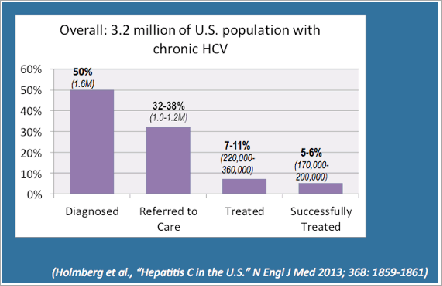
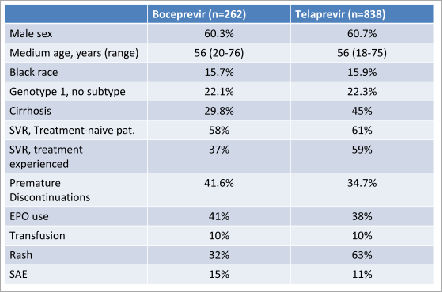
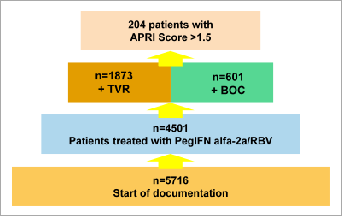
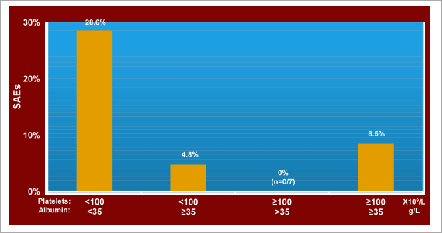
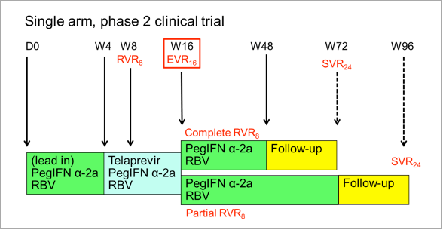

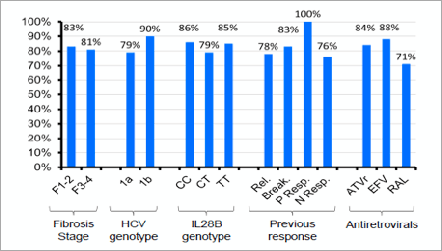
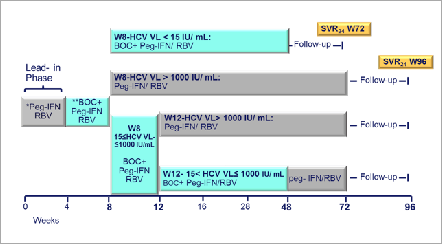
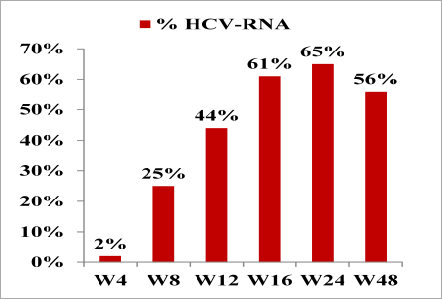
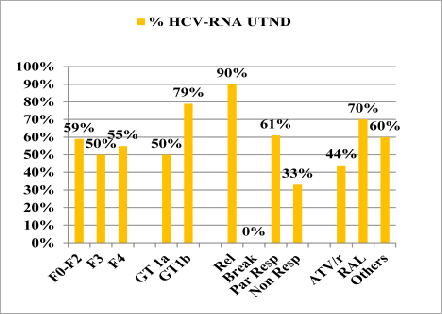
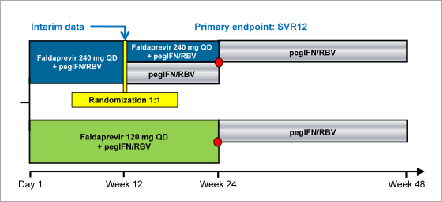
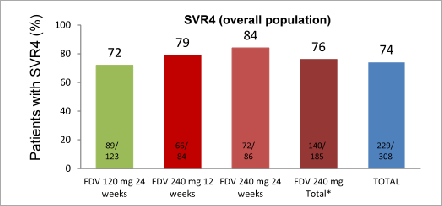
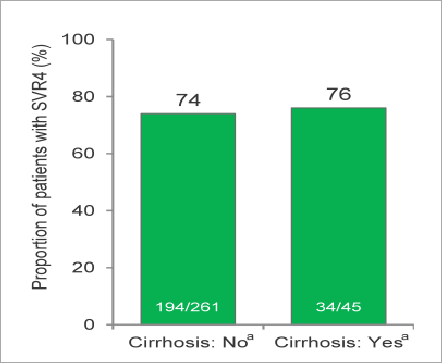

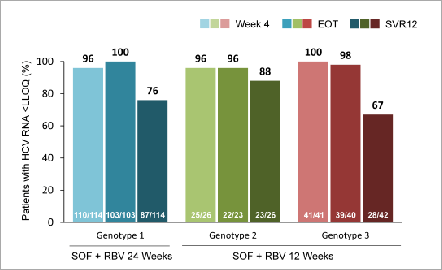
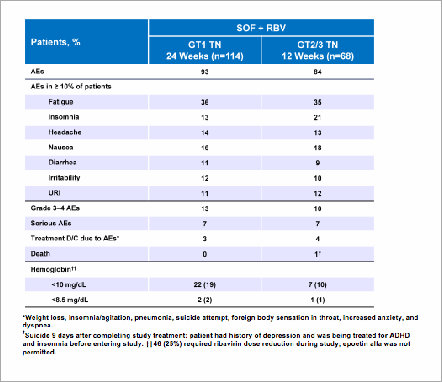
No comments:
Post a Comment